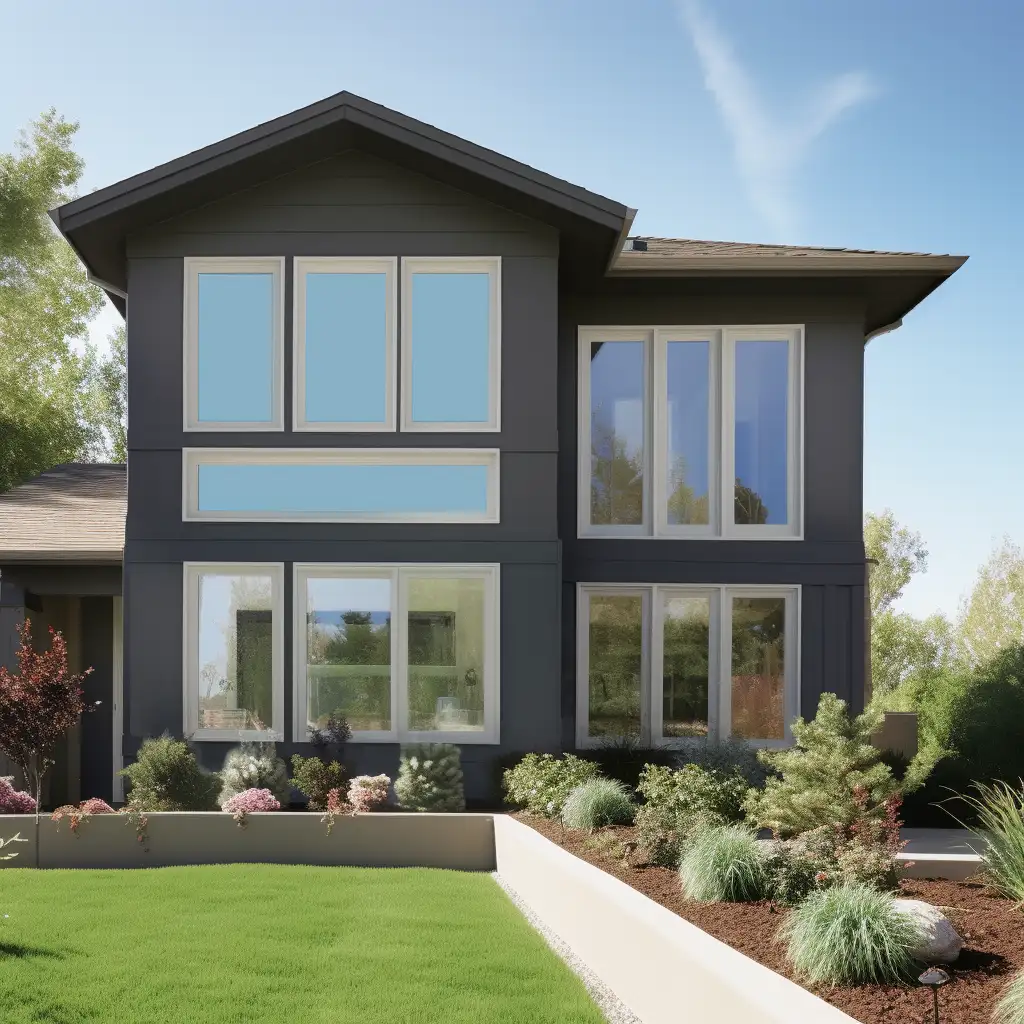Budget Friendly Residential Window Tint Options for each Spending plan
Budget Friendly Residential Window Tint Options for each Spending plan
Blog Article
How Residential Home Window Tinting Boosts Your Home's Energy Performance
Residential window tinting provides an engaging solution for property owners seeking to boost power efficiency within their living rooms. By using specialized films to windows, it effectively minimizes warm transfer, consequently maintaining interior temperatures and reducing the requirement for excessive home heating or cooling.
Recognizing Window Tinting
Comprehending window tinting is essential for home owners looking for to boost both comfort and power efficiency in their home. Residential Window Tint. Window tinting entails the application of a thin film to the interior or outside surface of glass home windows. This film can substantially modulate the quantity of sunshine and warm that enters a home, hence affecting interior climate conditions
There are different kinds of home window tinting movies offered, each with unique properties. As an example, dyed movies soak up solar power, while reflective films deflect it away from the glass surface area. Ceramic movies offer an equilibrium of exposure and warm denial, making them a popular choice among homeowners. The performance of window tinting is frequently determined by its Visible Light Transmission (VLT) percentage, which shows just how much light can pass via the movie.
Benefits of Power Efficiency
Home window tinting not just enhances visual appeals but likewise plays a significant function in improving power efficiency within domestic spaces. By minimizing warm transfer through windows, colored movies develop an extra secure interior environment, which can bring about substantial reductions in energy consumption for cooling and heating. This energy performance equates right into lower energy costs, offering house owners with substantial lasting cost savings.

Additionally, window tinting improves the convenience of living rooms. By lessening glare and obstructing hazardous UV rays, tinted home windows develop an even more pleasant environment, which can cause improved well-being for residents. The defense versus UV rays additionally aids preserve furnishings and flooring from fading, adding to the longevity of home things.
How Tinting Works
Tinting films run through a combination of advanced materials and modern technologies designed to control the quantity of solar power entering a home. Primarily made up of polyester, these films usually incorporate ceramic or metal bits that mirror and absorb warmth. go to the website This dual ability allows them to considerably reduce the infiltration of ultraviolet (UV) rays and infrared radiation while allowing noticeable light to travel through.
The effectiveness of home window tinting is gauged by its solar heat gain coefficient (SHGC), which suggests exactly how much solar power is transferred via the home window. Reduced SHGC worths are more suitable as they represent better warm rejection. Additionally, window colors can feature a range of tones, enabling homeowners to personalize their aesthetic choices while boosting energy effectiveness.
Moreover, these movies function as a barrier, preventing warm loss during cooler months by reflecting interior warmth back right into the space. This thermal insulation impact enhances the air conditioning benefits obtained during warmer months, adding to a well balanced interior environment year-round. By handling solar power efficiently, domestic home window tinting not only boosts comfort however additionally plays an important role in minimizing power usage and lowering utility expenses.
Picking the Right Color

There are different kinds of home window movies readily available, including dyed, metalized, and ceramic. Ceramic movies offer outstanding warm control without jeopardizing exposure and are extremely resilient, making them a prominent choice.
Noticeable light transmission (VLT) is one more critical aspect, as it find here shows the quantity of all-natural light that can go through the colored glass. House owners must select a color with a VLT that matches their lights preferences while still providing sufficient glow reduction.
In addition, evaluating the solar heat gain coefficient (SHGC) can assist determine just how well a color can block warm from sunlight. A lower SHGC shows far better heat control, inevitably boosting power effectiveness.
Installation and Maintenance Tips
Correct installment and upkeep are crucial parts in maximizing the benefits of household window tinting. Experts also make use of specialized devices and methods, which can boost the sturdiness and efficiency of the color.
Complying with installment, upkeep is necessary to prolong the life of the home window film. It is suggested to wait at the very least 30 days prior to cleaning up the colored windows to enable the sticky to heal fully.
Dealing with my website these problems without delay can protect against additional damages and maintain power efficiency. By sticking to these setup and upkeep tips, homeowners can ensure their home window tinting continues to give considerable power savings and convenience for years to come.
Final Thought
In final thought, residential home window tinting offers as a reliable option for improving power performance within homes. By decreasing warmth transfer and obstructing hazardous UV rays, home window movies add to decrease energy usage and boosted indoor comfort.
Home window tinting involves the application of a thin film to the inside or exterior surface of glass home windows. By minimizing warmth transfer with windows, colored films develop a more stable indoor environment, which can lead to significant decreases in energy usage for heating and cooling.The performance of home window tinting is gauged by its solar heat gain coefficient (SHGC), which suggests how much solar power is transferred via the home window. By handling solar power effectively, property home window tinting not only boosts convenience however additionally plays an essential duty in decreasing power usage and reducing utility expenses.
By reducing warm transfer and obstructing dangerous UV rays, window films contribute to reduce power intake and improved interior convenience.
Report this page